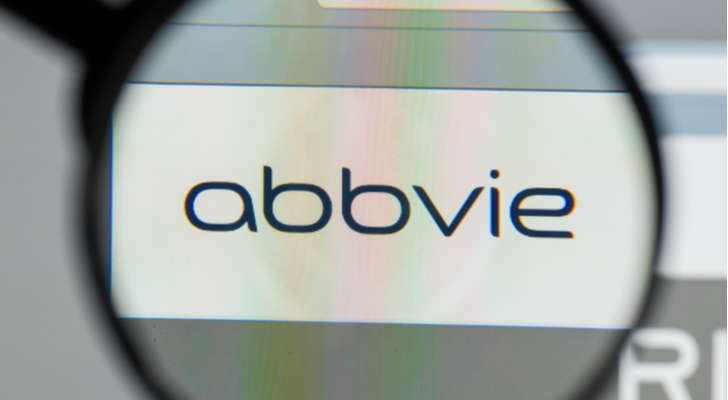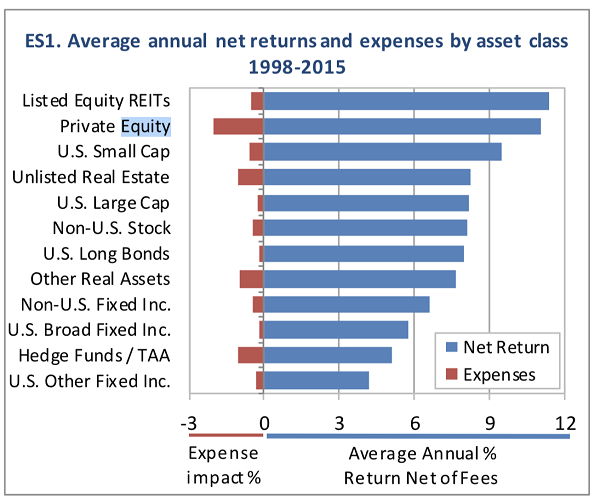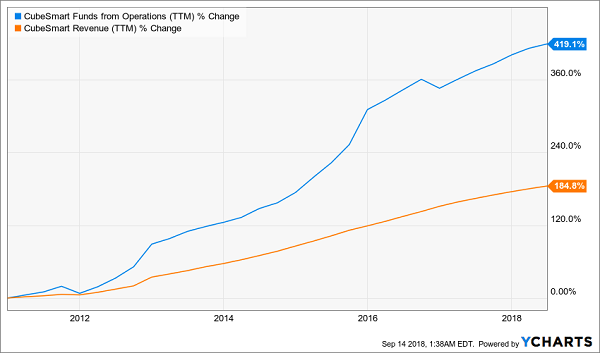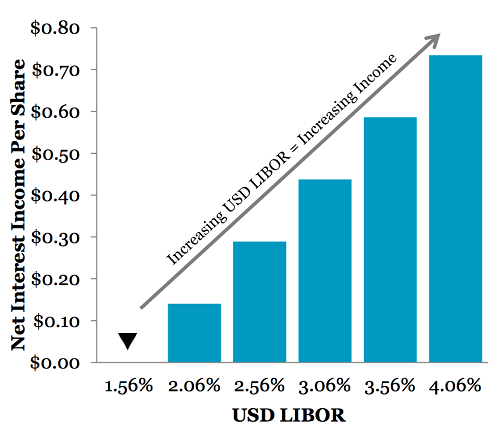
One of the more popular strategies among investors today is to seek out “home runs.” These are lesser-known companies that have tremendous upside potential, but carry the risk of collapsing should business prospects go awry. While a balanced portfolio allows for some speculation, now is also a great time to consider S&P 500 stocks.
Why? For starters, the oft-cited benchmark index has worked out its choppiness. Since the second half of this year, the S&P 500 has gained nearly 7%. In sharp contrast, the index was much more volatile in the first half, moving a mere 1% since the start of January. The improved sentiment is a chance for investors to benefit from a rising tide.
Another reason to consider S&P 500 stocks is that they’re more stable on the way down. Of course, nobody hopes for a decline once a position has been initiated. But in this unpredictable market environment, leading blue chips offer confidence that smaller names can’t provide.
With that said, let’s dive into the best S&P 500 stocks to buy:
S&P 500 Stocks to Buy: AbbVie (ABBV)

Biopharmaceutical firm AbbVie (NYSE:ABBV) has been a fixture of the S&P 500 index for almost six years. But after enjoying a stellar performance in 2017, sentiment has declined significantly this year. Since the January opener, ABBV is only slightly above parity.
That said, I think this is an ideal time to consider buying one of the most powerful names among S&P 500 stocks. ABBV levers excellent profitability and growth metrics, highlights being its operating margins and double-digit revenue growth rate. In the second quarter, AbbVie rang up nearly $8.3 billion, up over 19% year-over-year.
For Q3, investors expect earnings-per-share to hit $2.01. This is nearer the higher end of individual estimates, which range from $1.94 to $2.06. Although an ambitious goal compared to the year-ago level’s $1.41 EPS, ABBV has the goods to deliver a beat.
Primarily known for its Humira drug, AbbVie has several other popular drugs in its pipeline. Additionally, many of them are in the late stages of the clinical-approval process and therefore offer more potential.
S&P 500 Stocks to Buy: Electronic Arts (EA)

Electronics Arts (NASDAQ:EA) is one of the most popular video game companies in the world, so it’s no surprise that it’s included among the top S&P 500 stocks. However, with fame comes hubris apparently. Management badly blundered in its Battlefield franchise, sending EA stock crashing.
Late last month, EA announced that it will delay Battlefield V one month to Nov. 20. Fans didn’t appreciate the creative direction the game’s producers took the series, and the results showed. Poor pre-sale numbers forced the company’s hands, and management decided to move the title into a less-competitive month.
The delay also caused EA to adjust its full-year guidance lower to reflect the lost sales. Understandably, that freaked investors, causing the slide.
However, EA is much bigger than any one franchise. One of its strongest divisions is its pro sports lineup. Thanks to exclusive licensing, EA provides a gaming experience unlike any other. Moreover, the Battlefield V issue isn’t unsolvable. Once designers give what the customers want, they’ll come running back.
As it stands, I view EA stock and its recent volatility as an opportunity to buy on discount.
S&P 500 Stocks to Buy: Best Buy (BBY)

Analysts once feared that the e-commerce revolution would negatively impact consumer-electronics retailers, and for the most part, they were right. Even mighty Best Buy (NYSE:BBY) had to adjust to the new realities of their industry. But BBY emerged as a success story.
Management focused on longer-term changes, such as incorporating lucrative businesses and getting rid of units that don’t work. Currently, their computing and mobile phones division represents the greatest share of total revenue. Coming in second place is consumer electronics, a very encouraging sign considering that Amazon (NASDAQ:AMZN) has changed the game here.
Another factor that should buoy investor sentiment is the company’s earnings performances. Since their fiscal Q1 2016, BBY has not once failed to at least meet consensus earnings targets. In fact, during this time, BBY exceeded expectations except for just one time in Q3 2018.
I don’t expect much to change for its fiscal Q3 2019 report. With a consensus EPS forecast of 85 cents, this is a very realistic target. In the prior year Q3, BBY delivered 78 cents EPS.
S&P 500 Stocks to Buy: Visa (V)

With unemployment near multi-year lows, and consumer sentiment generally moving higher, now is a great time to consider Visa (NYSE:V). For one thing, Visa dominates the credit-card market, levering 323 million cardholders. Its closest rival is Mastercard (NYSE:MA), which is some distance away at 191 million cardholders.
Another reason to look into V stock is its technical performance. Since the beginning of this year, V shares have gained over 28%. But I wouldn’t consider this to be a fluke. Thanks to the improved sentiment toward the consumer economy, Visa is likely to make steady gains.
Of course, I don’t expect massive upside. But as long as consumers keep buying, which appears likely at this point, V stock is in good shape. Visa started to come alive in late 2011 (around when we started to recover from the Great Recession), and it hasn’t looked back since.
S&P 500 Stocks to Buy: Darden Restaurants (DRI)
For the longest time, S&P 500 stocks related to the restaurant industry had a giant question mark over them. Facing a difficult road following the recession, and with brick-and-mortars experiencing declining foot traffic, eateries were in a bad position.
But fast forward to this year, and suddenly, the tune has changed. For 2018, Darden Restaurants (NYSE:DRI) has gained over 24%. And while DRI shares appear overextended at this level, I wouldn’t be surprised if it eventually moves significantly higher.
As Bloomberg reported last month, consumers have splurged at restaurants across the country. In fact, we’ve witnessed a record spike in revenues at food establishments. Part of the reason is related to tax cuts as people are choosing to spend their extra funds on restaurants.
But I think a bigger component is the labor market. While not a perfect situation, those who have college education and in-demand skills are finding ample work. That’s a boon for DRI, as it appears Americans are getting hungry again.
S&P 500 Stocks to Buy: Chevron (CVX)

Wall Street is currently scrutinizing oil prices with a fine comb. Just recently, the White House announced plans to impose fresh tariffs worth $200 billion on Chinese goods. Of course, the implication is negative. Usually, when the number one and number two economies of the world clash, we all suffer.
But we also must consider a twist to this story: simultaneously, President Trump seeks to tighten Iran’s oil exports to zero to bring them to the nuclear negotiating table. Since Iran is one of the world’s biggest exporters, this factor should more than offset the China tariffs.
That’s why investors should look into buying Chevron (NYSE:CVX) during this market weakness. For one thing, I doubt the negative sentiment toward crude oil will continue. On another level, the vast majority of people drive fossil-fuel powered vehicles. Yes, electric vehicles are the future, but it will take some time for them to make a decisive impact.
For now, the Iran situation is the most pressing concern. Oil prices will likely trek higher throughout the rest of this year, meaning you’ll want exposure to CVX stock.
S&P 500 Stocks to Buy: Harley-Davidson (HOG)

Among S&P 500 stocks, absolutely none is more American than Harley-Davidson (NYSE:HOG). Indeed, Harley-Davidson is painfully American. They’re big, brash and unapologetic, much like our people. Own a hog from HOG, and you have a piece of Old Glory sitting in your garage, just waiting to terrorize the neighborhood.
So it’s a strange twist that Harley-Davidson, among all the S&P 500 companies, that has aroused President Trump’s vitriol. HOG and Trump have bickered back and forth over the administration’s hardline stance on tariffs and sanctions. In keeping with the times, Harley-Davidson’s management wants to shift some operations overseas. Anachronistic Trump isn’t having any of it.
Another problem impacting HOG stock are millennials. According to CNBC, young consumers that are steadily growing their income are avoiding motorcycles. And let’s face facts: HOG hasn’t performed well over the years.
Still, investors can salvage something here. Regarding millennials, analysts have previously made sweeping generalizations about this demographic, only to be proven wrong later. They could very well take up HOG riding when millennials eventually have — God forbid! — their mid-life crises.
Then there’s the international expansion. Once the sanctioning boils over, or if Trump gets voted out, HOG will enjoy a clean slate. That would also give them opportunities to boost their presence overseas. It will require some patience, but Harley-Davidson has the ability to surprise.
S&P 500 Stocks to Buy: Facebook (FB)

This year, Facebook (NASDAQ:FB) has turned from one of the most respected S&P 500 stocks to buy into one of the most demonized. Frankly, I don’t understand the vitriol. FB may have inadvertently assisted the Trump campaign, but come on! The American electorate voted for Donald Trump, not Facebook.
This is why I view antagonism toward Facebook as a political distraction and witch hunt. The difference here, though, is that politics are hurting FB stock, which is a shame. For instance, several analysts have noted with concern that the company generated the slowest growth in daily active users ever.
But isn’t this exactly what we should expect? FB has dominated the internet-connected world; they can’t reproduce humans. Not only that, the fact that any kind of growth occurred necessarily means that social outrage against the company failed. In late July, I wrote the following:
“The most recent FB earnings report actually proved my argument. North American DAU stats were flat year-over-year, and virtually in line with consensus expectations. That tells me that the aforementioned fiasco that led to the #DeleteFacebook campaign ultimately did nothing.
Facebook is simply too ingrained in our society, and I would argue, too useful for us to give up. Not even Hollywood’s self-righteousness and a trendy millennial’s exaggerated self-importance could dent Facebook engagement stats.”
The volatility makes no sense. I just look at it as an opportunity to buy FB stock on a discount.
S&P 500 Stocks to Buy: HP (HPQ)

HP (NYSE:HPQ) may appear as a strange choice for a stock to buy going into the Q3 earnings season. After all, as PC Magazine’s John C. Dvorak bluntly stated, “the traditional laptop is dead.” Dvorak asks a simple question: “When you look at PCMag’s roundup of the best laptops, do you ever think to yourself, ‘Wow, I want that now!’ Never happens.”
I’m actually a little bit surprised that Dvorak still has a job contributing articles for PC Magazine! And while I respect his opinion in that laptops lack compelling innovations, I disagree with his ultimate conclusion. The laptop and the PC platforms face new competition, but they’ve proven extremely resilient.
This is one of the reasons why HPQ has performed well since getting booted from the Dow Jones index. While pundits deride traditional computer products, they’re much more useful than gimmicky tablets. Plus, higher-end laptops provide the perfect balance between performance and portability.
Finally, to address Dvorak’s point, I don’t get excited about laptop innovations. That said, I don’t get excited about smartphone or tablet innovations, either. At a certain point, a smart device is a smart device.
But one thing that laptop and PC specialists like HPQ advantages is consistent demand. While traditional computers aren’t sexy, they get the job done quickly and efficiently. Thus, companies like HPQ aren’t going away anytime soon.
S&P 500 Stocks to Buy: FedEx (FDX)

FedEx (NYSE:FDX) is seemingly one of those S&P 500 stocks that faces an Amazon threat. Critical shipping partners at first, Amazon has made some noise about starting their own courier division. Understandably, the implications worry investors, but FDX is still a long-term buy.
We just need to consider that FedEx is an $81 billion enterprise. Rival UPS (NYSE:UPS) is a $120 billion enterprise. While it’s true that Amazon dwarfs both these stalwarts, even disruptive CEO Jeff Bezos must watch his expenditures. As he’s busy taking over disparate industries, he must ensure that his investments make economic sense.
While Amazon can toy around with their various internal courier solutions, it shouldn’t drastically impact FDX. The company, along with UPS, has a virtually impenetrable network. To duplicate that wouldn’t make financial sense.
Moreover, e-commerce sales represent a consistently increasing portion of total retail sales. Although Amazon dominates this sector, they’re not the only players. With several brick-and-mortars incorporating their own online channels, I like FDX for longer-term, reliable growth despite its recent quarterly miss.
S&P 500 Stocks to Buy: Goodyear (GT)

Among the most-recognized S&P 500 stocks, Goodyear (NASDAQ:GT) is one of the more contrarian opportunities. You can tell this simply by looking at its price chart. Year-to-date, GT shares are down nearly 25%.
My frequent readers probably expect me to say something like GT has stabilized over the last several weeks. You’re right, and it has. Since the beginning of July, GT stock is up over 4%. Although that’s nothing to write home about, it provides some reassurance as the company approaches its Q3 report.
Admittedly, the day-to-day movements for GT stock are difficult to determine. But I’m encouraged that since the five years or so following the Great Recession, Americans have driven noticeably more miles. I expect this trend to continue, especially because our labor market has improved for the educated and upwardly mobile.
Undoubtedly, GT is a risky play due to its prior weak performances. But broader trends suggest that this volatility is a profitable opportunity.
S&P 500 Stocks to Buy: Home Depot (HD)

A significant and tragic reason why Home Depot (NYSE:HD) dominates the business news media is Hurricane Florence. The storm has already taken many lives, and intractably, several more families must undergo the rebuilding process. No matter how you cut it, HD revenues will experience a bump up.
Some might view that as an opportunity to profit off HD stock. But as I argued in a prior write-up for Home Depot, the trading benefits are inconclusive. In some cases, HD does rise immediately during major storms. But the data does suggest that particularly devastating storms tend to hurt HD in the nearer-term.
I don’t recommend trading HD based on Florence. If anything, these are one-off occurrences that are difficult to gauge. But more importantly, Home Depot has a business that’s largely immune to Amazon’s intrusions.
That’s especially the case for storms and other emergency events. Customers are not going to comparison shop online for necessary supplies. And even in non-emergency situations, Home Depot provides unparalleled conveniences.
S&P 500 Stocks to Buy: Lockheed Martin (LMT)

Lockheed Martin (NYSE:LMT) is one of the most renowned defense contractors among S&P 500 stocks. It’s also having a surprisingly weak year. Despite a burst in bullish sentiment recently, LMT has gained only 7.3% YTD. For the record, this is just a hair under the S&P 500 index.
In my opinion, LMT is not getting the respect that it deserves. I understand that President Trump boasts consistently about allegedly thawing relations with North Korea. Earlier this year, Trump met North Korean dictator Kim Jong-un in an unprecedented summit.
While I respect the President for taking some kind of action, I’m also firm that I don’t trust North Korea. Nor do I trust the maniacal “dear leader” Kim. Sorry, but not sorry.
How does this play into LMT stock? Simple: more than ever, we must demonstrate a show of force. This is physically best done through our advanced fighter jets. There’s nothing quite like buzzing around our enemies’ airspace, and letting them know we can physically do the business.
Admittedly, it’s an immature tactic, but it works. LMT allows us to flex our muscle but still maintain diplomatic channels. In this complicated geopolitical environment, LMT is easily a longer-term buy.
S&P 500 Stocks to Buy: Raytheon (RTN)

Should a conflict ever escalate into a hot one, I’d like to own Raytheon (NYSE:RTN) as a hedge. Known primarily for its smart missiles and guidance systems, RTN is one the most relevant defense contractors today.
Don’t get me wrong: physical warcraft, as I mentioned for Lockheed Martin, is still a critical component of our military diplomacy. However, the modern battlefield has become increasingly asymmetric. A terrorist with a homemade explosive can wreak untold damage. Or a lone hacker could bring a powerful economy to its knees.
This transition also means that powerful militaries with extensive physical assets are vulnerable to asymmetric attacks. To alleviate this problem, RTN produces next-generation weapons systems, such as combat drones. Such technologies allow military operators to conduct operations in hard-to-reach, inhospitable terrain.
The other invaluable benefit is that it keeps our men and women in uniform out of harm’s way. Especially in this ever-evolving world, having some exposure to RTN simply makes sense.
S&P 500 Stocks to Buy: Altria Group (MO)
Altria Group (NYSE:MO) has simply not had a good year in 2018. Since the January opener, MO has shed 9.5% in the markets. The biggest concern for investors is that Americans are smoking far fewer cigarettes than ever.
The “good news,” though, is that American smokers are gravitating toward e-cigarettes or vaporizers. These products heat the tobacco flavoring near the point of combustion, but not beyond it. The resultant plumes are much cleaner and have noticeably fewer chemical byproducts, such as carbon monoxide.
Of course, vaporizer companies compete with big tobacco, but the comparison isn’t worth discussing. MO is a multibillion-dollar enterprise. As a whole, experts predict that the vaping market will hit $27 billion in value. Relative to Altria’s market capitalization of nearly $118 billion, that’s nothing.
Moreover, MO has invested significant resources into its heat-not-burn devices. Although similar in principle to vaporizers, Altria’s products are made by smokers, for smokers. The experience is much more attuned to what natural-cigarette aficionados prefer.
So don’t butt-out MO stock. This is an underappreciated contrarian opportunity.
As of this writing, Josh Enomoto did not hold a position in any of the aforementioned securities.
Pay Your Bills for LIFE with These Dividend Stocks
Get your hands on my most comprehensive, step-by-step dividend plan yet. In just a few minutes, you will have a 36-month road map that could generate $4,804 (or more!) per month for life. It's the perfect supplement to Social Security and works even if the stock market tanks. Over 6,500 retirement investors have already followed the recommendations I've laid out.
Click here for complete details to start your plan today.
Source: Investor Place











